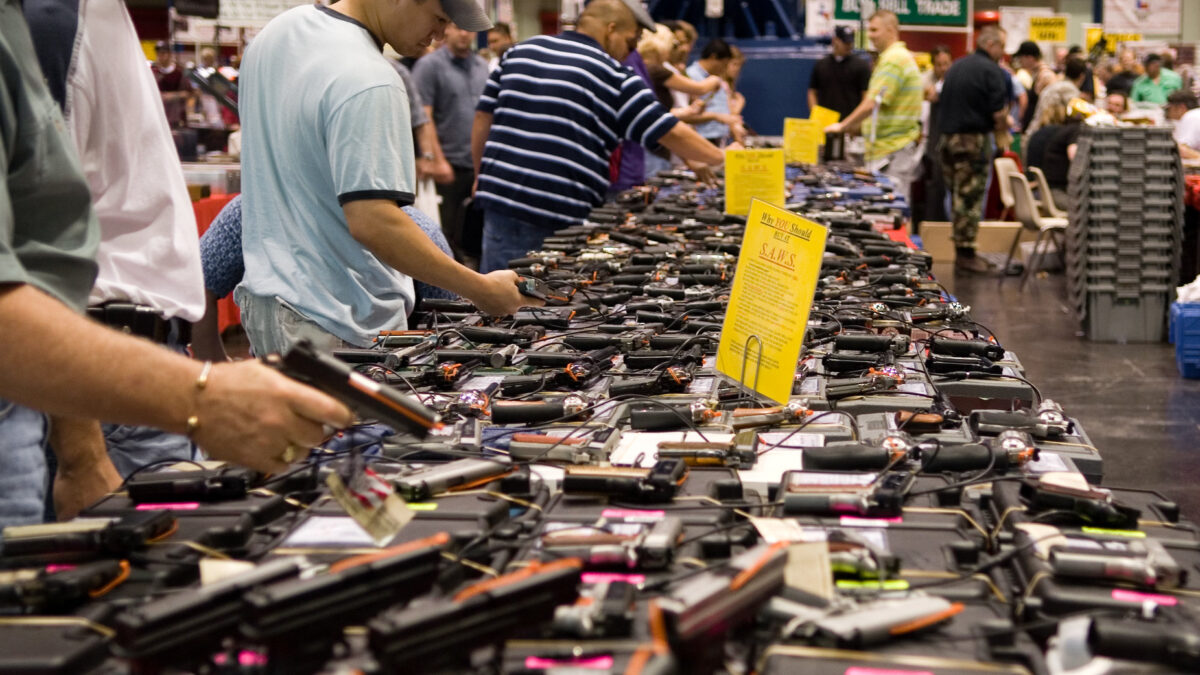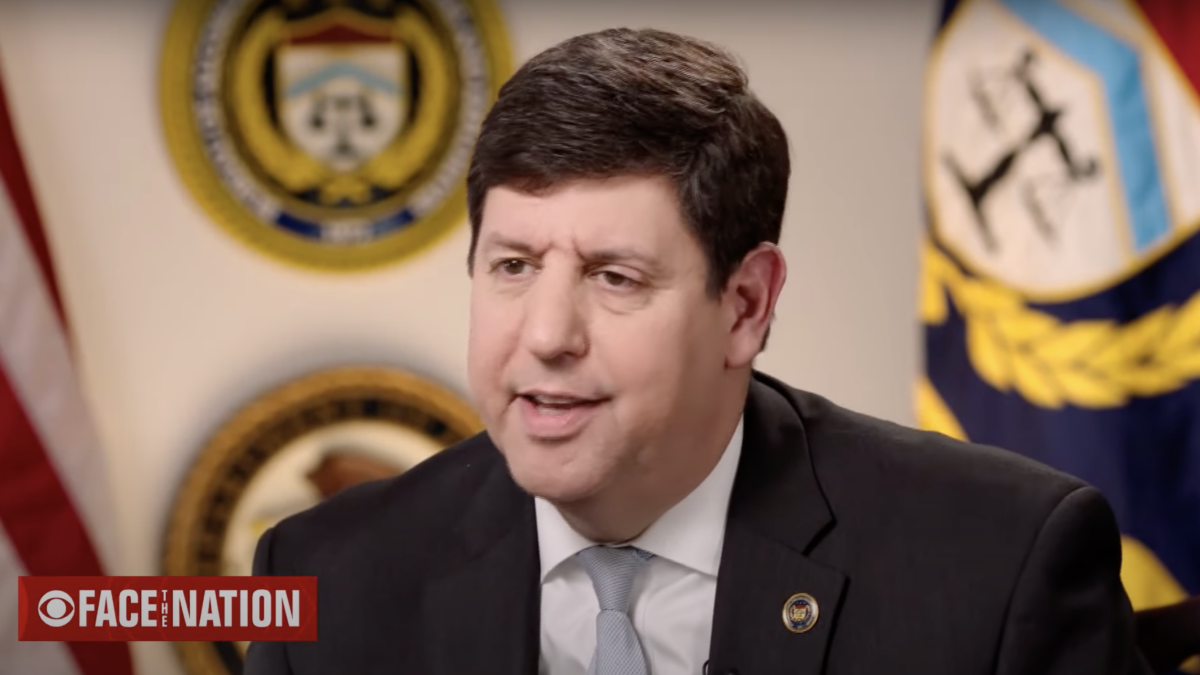
Another day, another series of embarrassing errors and obfuscations by gun controllers who are ignorant of how guns, and the laws that seek to control them, actually work.
In its quest to drive up gun sales even further and make gun control even less popular, the New York Times published yet another overwrought editorial on Friday demanding more gun control. Here’s how the editorial, given the very measured and objective title of “Gunmakers’ War Profiteering on the Homefront,” began:
As each new mass shooting leaves dead and wounded Americans strewn like casualties on a battlefield — a butcher’s toll that has now intersected with the international terrorist threat — the gun industry’s culpability amounts to war profiteering through the reckless sale of military weapons tailored for the civilian homefront.
It only got more hysterical from there. Notably missing from the editorial? Any basic understanding of guns or gun control laws. In this paragraph, the New York Times claims that .50-caliber sniper rifles are now flooding the streets due to the expiration of the 1994 federal assault weapons ban:
Assault weapons were banned for 10 years until Congress, in bipartisan obeisance to the gun lobby, let the law lapse in 2004. As a result, gun manufacturers have been allowed to sell all manner of war weaponry to civilians, including the super destructive .50-caliber sniper rifle, which an 18-year-old can easily buy in many places even where he or she must be 21 to buy a simpler handgun. Why any civilian would need this weapon, designed to pierce concrete bunkers and armored personnel carriers, is a question that should be put to the gun makers who profit from them and the politicians who shamelessly do their bidding.
Those icky guns aren’t just destructive, they’re super destructive. There’s just one teeny, tiny problem with that paragraph: bolt-action .50-caliber rifles were never covered by the federal assault weapons ban. There’s no possible way the expiration of the assault weapons ban could have led to the proliferation of a weapon that was never actually banned by the law, but editorial page editor Andy Rosenthal has never been one to let simple facts get in the way of an unhinged screed.
The 1994 assault weapons law banned semi-automatic rifles only if they had any two of the following five features: a collapsible stock, a pistol grip, a bayonet mount, a flash suppressor, or a grenade launcher. I am unable to see how a collapsible stock or a pistol grip or a mere bayonet mount (not the bayonet itself) is capable of turning a regular weapon into a deadly assault weapon, but your mileage may vary. A bolt-action rifle, even a super destructive .50-caliber bolt-action rifle, that contained all of those features still would not have been covered by the 1994 ban. And to get a .50-caliber semi-automatic rifle around the 1994 restrictions, you would just need to pin the stock and switch out the pistol grip.
And then there’s the fact that a .50-caliber rifle has never been used in a mass shooting in the U.S. Never. That’s probably because those guns are hugely expensive (potentially costing $10,000 or more, not to mention the cost of ammunition) and difficult to lug around given their size and weight (the gun is nearly four feet long and weighs 24 pounds with a loaded magazine). But this is the gun-confiscating New York Times we’re talking about. Expecting its editorialists to understand the objects about which they are editorializing would be a bridge too far.
Which brings us to my next favorite selection in Friday’s editorial: the insinuation that lax control laws allowed the San Bernardino terrorists to build their deadly arsenal with “ease”:
Across recent decades, gun manufacturers, facing a decline in general gun ownership as demographics shifted and sports hunting faded, have cynically created a domestic market for barely altered rifles and pistols developed for the military. These are weapons designed for the rapid spray-shooting of multiple enemy soldiers in wartime, not homeland civilians living in peace.
Yet the latest casualty count of 14 killed and 21 wounded last week in the gun carnage at San Bernardino, Calif., is another horrendous confirmation of how these easily available weapons — marketed as macho tools for a kind of paramilitary self-defense — are being used again and again for rapid-fire attacks on innocent people. The fact that the California killers were self-proclaimed Islamic warriors makes the ease with which their arsenal was assembled all the more outrageous.
What the New York Times predictably fails to tell its readers is that the rifles used by the San Bernardino terrorists were, in fact, illegal. What made them illegal? California has its own version of the expired federal assault weapons ban, which for some reason failed to prevent terrorists from obtaining the weapons and using them to kill people. You read that correctly. Terrorists hell-bent on death and destruction were somehow still able to get their hands on illegal weapons. Imagine that. Criminals with no regard for laws against murder weren’t dissuaded by laws against the possession of certain weapons. It’s almost like gun laws, like drug laws and early-20th century alcohol laws, don’t do a very good job of keeping banned items out of the hands of criminals who wish to possess them. Weird, right?
And don’t get me started on the New York Times‘ silly assertion that a semi-automatic weapon is just a “barely altered” version of a military grade automatic weapon. For years, gun controllers deliberately obscured the difference between the two, regularly referring to semi-automatic guns (one trigger pull, one bang) as automatic weapons (one trigger pull, lots of bangs until you run out of ammunition). In fact, the New York Times did that very thing when it suggested that “rapid spray-shooting” weapons are available to “homeland civilians living in peace” (the families of the 14 victims of the San Bernardino terrorist attack might reject the characterization of the Inland Regional Center as peaceful). But just in case the New York Times was unable to get away with its blatantly dishonest conflation of automatic and semi-automatic, its writers decided to parrot the notion that there’s no real difference between the two types.
It’s almost enough to make one pity these poor, ignorant simpletons, especially when you consider the latest results from the New York Times’ very own poll: support for the assault weapons ban is now at record lows:
For first time in 20 yrs of @nytimes poll, a majority of Americans opposes ban on assault weapons pic.twitter.com/xosjHoDNTi
Patrick J. Egan (@Patrick_J_Egan) December 11, 2015
Here’s how the New York Times described the results of its poll in the 24th paragraph of a 25-paragraph story on the survey:
What has shifted notably are attitudes on gun control. Only 44 percent of Americans favor a ban on assault weapons, 19 percentage points lower than after the mass shooting in Tucson in 2011. And while 51 percent favor stricter gun control in general, that is down from 58 percent in October.
The truth of the matter is that gun control is less popular than ever, thanks in large part to the fears of Americans that their government is either unwilling or incapable of keeping them safe from domestic terrorist attacks. You’d never read this in the New York Times, but the National Rifle Association (NRA) is far more popular than either President Barack Obama or Hillary Clinton. That’s no accident.
What gun controllers either don’t realize or refuse to accept is that their radical agenda is not supported by most Americans. The more gun controllers talk, the more popular gun rights become. Most people understand that they have a God-given right, acknowledged and protected by the Second Amendment to the U.S. Constitution, to defend themselves and their families from anyone who would harm them. Unhinged demands for gun control by ideologues like Andy Rosenthal and Barack Obama have the exact opposite intended effect. Whenever they lecture, gun sales go up, and gun rights become more popular.
As a result, silly and uninformed rants like those published in the New York Times on Friday don’t bother me. They amuse me to no end. Keep it up, gun controllers! Your rhetoric just might be the most effective advertisement for guns ever devised.









